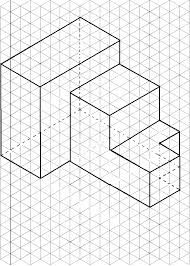

Difference between Isometric, Oblique and Orthographic Drawing.
Isometric drawings- A pictorial representation of an object in which all three dimensions are drawn at full scale rather than foreshortening them to the true projection. An isometric drawing looks like an isometric projection but its all lines parallel to the three major axes are measurable. (http://www.businessdictionary.com/definition/isometric-drawing.html)
Oblique drawings- They are designed to show a three dimensional view of an object. It is a kind of a drawing that shows one face of the object in true shape, but the other faces on a distorted angle. Oblique is not really a '3D' system but a 2 dimensional view of an object with 'forced depth'. (http://wiki.answers.com/Q/What_is_an_oblique_drawing)
Orthographic drawings is a means of representing a three-dimensional object in two dimensions. It is a form of parallel projection, where the view direction is orthogonal to the projection plane, resulting in every plane of the scene appearing in affine transformation on the viewing surface. It is further divided into multi-view orthographic projections and axonometric pictorials. (http://www.answers.com/topic/orthographic-projection-1)
So basically, Isometric drawings is different from Oblique and Orthographic drawings. Oblique and Orthographic drawings are somehow similar to each other except that Oblique drawings shows only one face of the object in true shape whereas Orthographic drawings shows all the faces.
JJ(:
how many faces does isometric show
ReplyDelete3
DeleteO
DeleteWhat is the difference between projection and drawing
ReplyDeleteDoes it means that Oblique drawing is not drawn in actual size or shape?
ReplyDelete